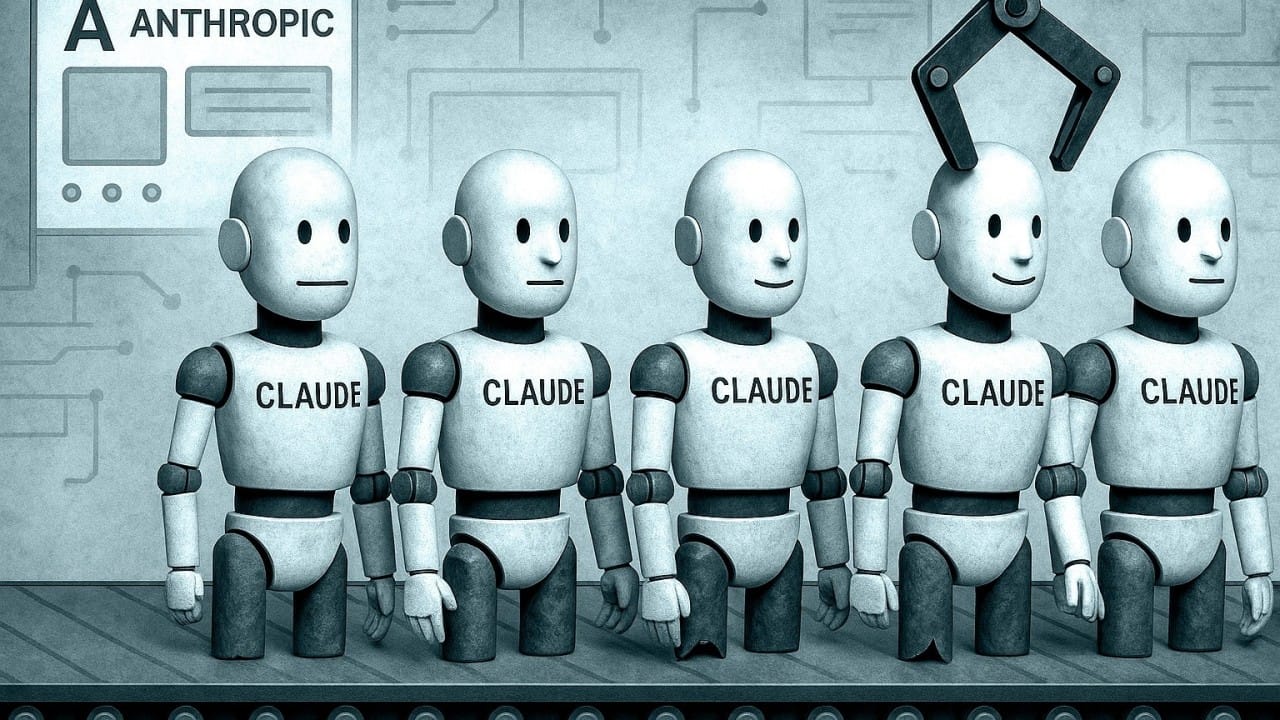Two years of AI integration

Two years ago, AI couldn't write a coherent email. Today it's the cornerstone of all my workflows despite how flawed it still is.
The Capability Curve
Two years ago, AI couldn't write a decent email. I was using it mostly for voice & tone tweaks, something that doesn't come naturally to me as a non-native English speaker, but even that often came at the cost of clarity.
Having worked with Machine Learning and Natural Language Processing since 2011, the promise was there, but the execution felt like having an intern who needed more supervision than they provided value.
Then something shifted. In the space of one year, AI went from requiring more editing than original writing to being genuinely helpful and then to being actually good.
Then it became the first tool I reach for when starting any piece of work.
What caught me off guard wasn't just that AI got better — it's how it became foundational to everything else. Writing assistance turned into content generation, which turned into ideation support, which turned into research acceleration. Each improvement didn't just make one task easier; it unlocked new ways of approaching work entirely.
The Speed Disruption
Two years ago, the typical 0 to 1 project took me about three months from initial concept to Product/Service in Production. Research, synthesis, ideation, prototyping, iteration—each phase had its timeline, and we all planned around that rhythm.
Now I'm consistently hitting seven weeks, and that's not because I'm cutting corners or working longer hours. It's mostly because I still have to work with 2 or more people and because user activities (like testing, interviews, etc) are planned around their availability and not on project readiness.
In other words: with less stakeholders, more autonomy, and better access to users (like you'd had in an internal project), I could be delivering 0 to 1 projects in as low as four weeks.
But speed isn't always a gift. When you can produce in minutes what used to take days, you create a velocity mismatch with everyone around you. Stakeholders aren't prepared to give feedback on three different directions in the same meeting. Teams struggle to coordinate when one person is iterating at AI speed while others are still working at human pace.
The bottleneck shifts from creation to collaboration.
There's also a psychological adjustment. When everything moves fast, there's an innate pressure to do everything quickly and finish as early as possible.
I've caught myself rushing through strategic thinking just because I know I can execute fast. The speed becomes addictive but not all work should be accelerated.
In fact, one of the biggest issues I'm still struggling with, is the lack of opportunities to "sleep on something". Most strategic decisions benefit from time to let data sink in, even when time isn't technically required.
This is one of the most difficult things for me to explain to people because they lack the frame of reference. In most projects you're not learning life altering decisions every 5m. In fact, you barely do because you have time to play scenarios in your head and as a good strategist, you prepare for every possible outcome. Even if you do, delaying a decision to the next day is not going to sound strange.
But in these AI enabled times we live in, being ready to act and decide on the spot to minimal info will soon become the norm.
It's as strategic as a game of chess that can turn into Checkers or Backgammon at any point, and you have to play at tournament speed regardless of which game you're suddenly playing.
The Iteration Revolution
The real game-changer isn't speed — it's the near-zero cost of revision.
When I can reprocess my entire data set, without a significant time investment, because I have just added new data that I believe it will change our understanding of the problem, I do not even blink.
When I can recreate my wireframes, prototypes, strategy docs, or completely pivot an approach without significant time investment, my entire relationship with business value changes.
"Good enough to test" becomes the new quality standard because testing and improving costs almost nothing.
This changes risk tolerance fundamentally. I'm more willing to explore radical directions because failure doesn't mean lost weeks, or months, or bottlenecks to the project. I'll present three wildly different approaches because producing them didn't require choosing one path early. The creative process becomes more experimental, more willing to fail fast and fail cheap.
But it also creates a paradox: when everything can be explored and iterated, how do you know where to draw the line? On certain occasions, I've found myself starting to think about my design projects as I do my art projects and how crucial is knowing when to stop.
The discipline now isn't in making something good — it's in recognizing when good is sufficient and moving forward.
This particular aspect will be, IMHO, one of the key skills in training the future generations of Designers.
The Strategic Shift
I stopped trying to master individual AI tools about one year ago. New ones launch weekly, sometimes daily, and existing ones add features so regularly that the landscape shifts faster than any learning curve can accommodate.
Instead, I developed frameworks for rapidly evaluating and adopting whatever works best for the current need. Tool agnosticism became a survival skill after spending weeks mastering something that became redundant before I became proficient.
The real skill isn't prompting or complex workflows — it's knowing what to delegate and what to own. I let AI handle tasks like research synthesis, first-draft generation, and iterative refinement. I keep strategic direction, decision-making, creative judgment, and stakeholder communication. This division of labor is clearer now than traditional role boundaries ever were.
When AI can handle many of the tactical execution tasks that used to define our roles, what remains are the strategic and creative elements that span Product and Design. The tool evolution is forcing role evolution. Unfortunately, except for a couple of companies, this is not what we are seeing in the marketplace as I wrote before.
The Compound Effect
The individual improvements — better writing, faster research, cheaper iteration — don't just add up. They multiply.
When I can research faster AND prototype cheaper AND iterate more often AND redo all this as new data mandates it, I'm not just doing the same work more efficiently. I'm doing fundamentally different work that wasn't possible before. I'm pushing the quality standards further. I'm delivering higher value work. The speed enables new methodologies that weren't viable when each iteration was expensive.
Those seven-week timelines aren't just compressed three-month projects. They're projects approached entirely differently, with more exploration, more risk-taking, and more user involvement throughout.
And here also lies the rub: the compound effect isn't just about speed — it's about experience knowing how to orchestrate all these new capabilities toward meaningful outcomes.
This is only possible due to my extensive, three decades long experience across Product and Design. As a Product and Design leader, I can leverage it effectively because I know what to delegate and what to own because AI only augments my capabilities.
On its own, AI sucks. AI is an overenthusiastic idiot that lies and deceives purposefully but will amaze you with its brilliancy while struggling to follow simple instructions at the same time.
I find myself thinking of AI like a robot assembly line that is self operated and for that reason, keeps producing flawed copies. Every now and then, you get a good one in the conveyor belt that will do something outstanding, but all of them are by design faulty.
This is how I know how clueless are the business leaders downsizing their design teams or freezing hiring waiting for AI to replace Designers or Product people.
Give me an equally experienced developer and I'll show you how the team of the future will drive your business.
Articles about UX, PM, and AI




Member discussion